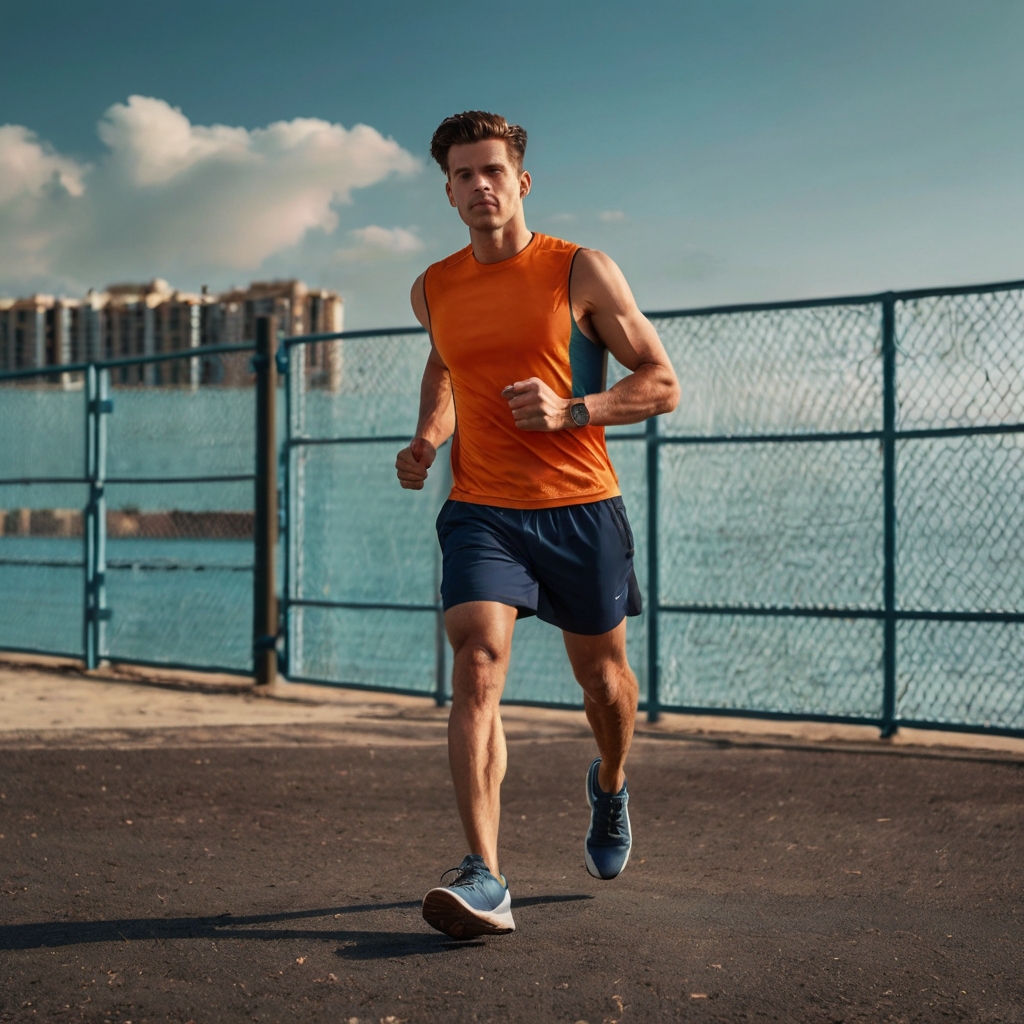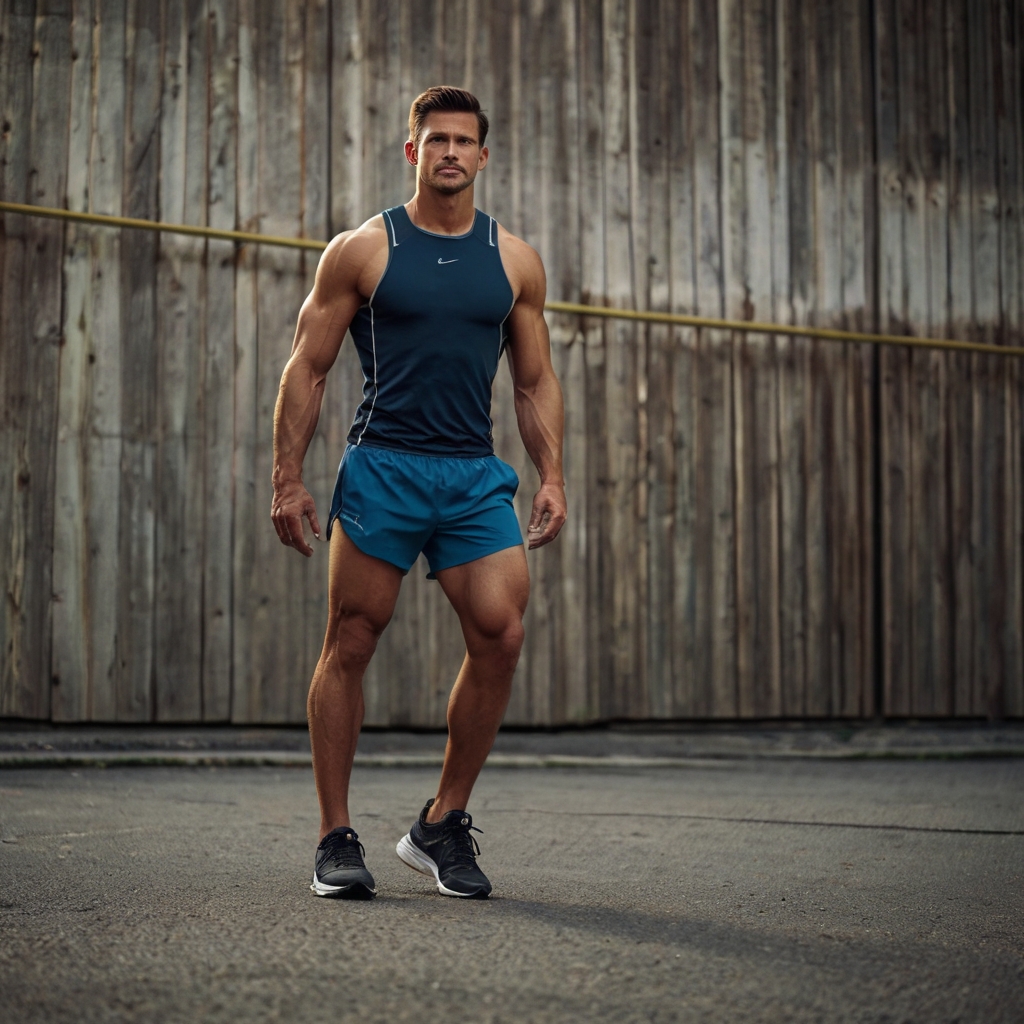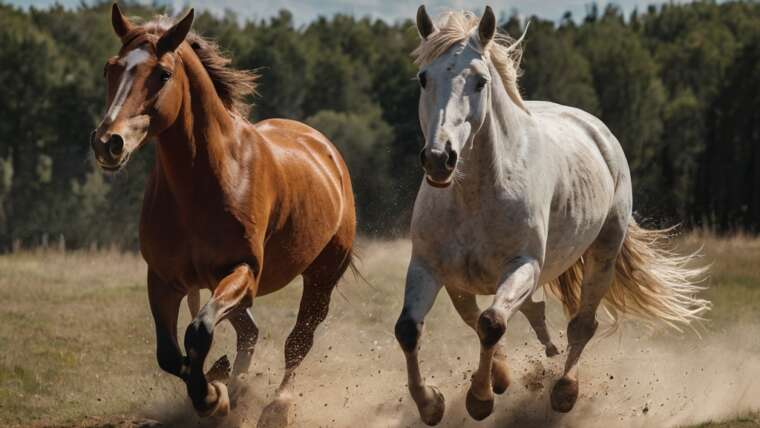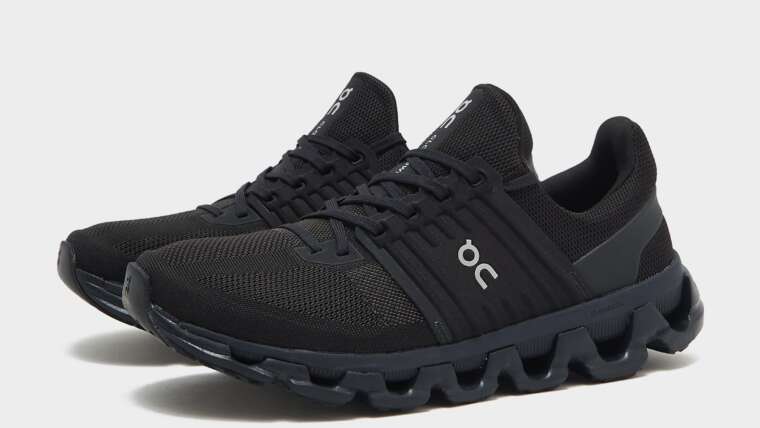Running shorts are a vital piece of gear to maximize performance during runs, especially in summer training. Their design helps minimize weight and maximize airflow. This keeps runners cool, dry, and mobile on the hottest days. The Runner’s World test team confirms that well-designed running shorts won’t dig into your waist or cause chafing around the inseam.
The year 2025 has brought exciting changes to running shorts design from major brands. Manufacturers now add more pockets because that’s what runners need. Men’s shorts come with shorter inseam lengths, and interior silicone grippers on cuffs stop legs from riding up. You’ll find options for every preference in the market – from Nike to Lululemon running shorts. This includes women’s compression shorts and men’s running shorts with built-in liners.
This piece will help you find what pro athletes don’t usually tell you about picking the perfect running shorts. You’ll get into different types from trail running shorts to traditional options. The guide covers key features like breathability and sweat-wicking fabrics. It also shows how to pick the best running shorts for specific activities. Looking for top-rated shorts or good options on a budget? This guide gives you the inside knowledge to make the right choice.

Table of Contents
Types of Running Shorts Explained
You need to know about different types of running shorts to find the right match for your running style and priorities. Each design has its own purpose – some help you run faster while others keep you comfortable on different terrains.
Split shorts
Split shorts have overlapping fabric on the outside of your hip. This unique design lets you move freely with each stride. These ultra-short options come with a 1-3 inch inseam, making them the shortest shorts you can find. We designed these shorts mainly for competitive runners. They use minimal material around the legs to help you move better and cut through air resistance during runs. Runners with larger thighs, sprinters, and mountain runners will find these especially helpful. Most split shorts come with built-in briefs that keep you covered while staying lightweight and performance-focused.
V-notch shorts
V-notch shorts are the most common running shorts out there. Their signature V-shaped cut in the side hem makes them stand out. This smart design gives your quads and IT bands room to move without showing as much leg as split shorts do. The moderate 3-5 inch inseam makes these shorts versatile enough to work for most runners. Both beginners and seasoned runners love these shorts for daily training. The design keeps air flowing while maintaining decent coverage.
Compression shorts
Compression shorts hug your thighs tightly and extend toward your knees with their skin-tight design. These shorts do more than just look good. They stop your thighs from chafing – a problem many runners face. The shorts support your muscles and might help you run longer. Research shows they could reduce muscle vibrations when your feet hit the ground, which might mean less muscle damage. The compression technology might also help clear out lactic acid and boost ATP production – the energy your muscles need to move.
2-in-1 shorts
2-in-1 shorts give you compression shorts under loose-fitting outer shorts. This clever design combines muscle support and chafe prevention with good airflow. Modern versions pack impressive storage options – some with up to eight pockets that hold your stuff without bouncing around. Top models come with extras like silicone dots that stop the shorts from riding up, fits that match your body’s movement, and reflective parts that keep you visible in low light.
Trail running shorts
Trail running shorts are built tough for off-road adventures. These shorts use strong materials and reinforced seams that handle rough terrain. Most designs come with secure zippered pockets that safely hold your phone, keys, and snacks without bouncing. Trail shorts run longer than road shorts with 6-7 inch inseams. This extra length protects you from scratches, sun, and temperature changes during long outdoor runs.
Track and road shorts
Track shorts focus on being super light with minimal design. They usually have short 3-5 inch inseams that let sprinters move freely. These shorts use ultra-thin, lightweight materials built purely for speed. Road running shorts balance toughness with breathability. They’re made to last through marathons without riding up or trapping sweat. Both types have small pockets for essentials, but road shorts offer more practical storage for longer runs. Track shorts excel at explosive speed while road shorts keep you comfortable over long distances.
Key Features That Make or Break Your Run
Your running experience can be amazing or terrible based on your shorts’ features. The right elements do more than just look good – they can reshape the scene of your performance and comfort on roads or trails.
Inseam length and mobility
The inseam length affects how well you move and feel during runs. This measurement goes from the crotch seam to the shorts’ hem. Short inseams (3-4 inches) let you move freely, feel lighter, and breathe better with less fabric. These shorter styles work great for speed workouts and races.
Medium-length inseams (5-7 inches) hit the sweet spot between coverage and performance, making them perfect for all types of runs. Trail runners or anyone who needs more protection might prefer longer inseams (7+ inches) that offer extra coverage without limiting movement.
Built-in liners vs. no liner
Runners often debate about liners. Built-in liners serve two main purposes: they help sweat escape by moving it outward, and add breathability since mesh fabric stays cool and doesn’t stick when wet. Most quality running shorts come with these liners, which use thin fabric or mesh cut like briefs.
Some seasoned runners like unlined shorts with good performance underwear. These shorts are more flexible since you can use them for other activities. Lined shorts are ready to go for tough workouts without extra underwear.
For runs over 20 miles, compression-style liners might protect you best from chafing.
Waistband comfort and adjustability
A good waistband stays in place at any speed. Quality running shorts use elastic bands with drawstrings to adjust the fit. The waistband shouldn’t slip down when carrying a phone or keys, or squeeze too tight and block blood flow.
Shorts with adjustable drawcords give you the best fit. Wider waistbands feel better over your belly and don’t dig in.
Pockets and storage options
Storage has become crucial in running shorts design. Think about what you’ll carry when picking shorts with pockets: phone, keys, snacks, or cards. Women’s running shorts now include phone-sized pockets that keep devices steady as you move.
The best designs have zippered pockets for security, easy-access side pockets, and hidden waistband spots. Some top models pack up to eight bounce-free pockets. Trail runners need secure storage since they carry more gear.
Breathability and sweat-wicking fabric
Quality running shorts use synthetic fabrics like nylon, polyester, and spandex that manage moisture well. Shorts with more nylon keep you dry in heat, while extra spandex gives you better stretch.
Great fabrics pull sweat away from your skin to keep you cool and prevent wet fabric from sticking. Light, breathable materials help you stay comfortable on long runs by controlling temperature and reducing chafe risks.
These key features turn basic running shorts into gear that helps you reach your running goals.

Fit and Comfort: What Pro Athletes Actually Prefer
Professional athletes look beyond what casual runners might think about when they pick their running shorts. Their priorities can help every runner make smarter choices for training and races.
Loose vs. tight fit
Professional athletes think over both function and specific workout needs when choosing between loose or tight-fitting running shorts. Tight compression shorts support muscles and improve circulation, which could lead to better endurance. These form-fitting options create less friction, so there’s a lower risk of irritation. Elite runners often pick compression styles for longer distances or intense training sessions.
Loose-fitting running shorts let more air flow through and keep you cooler – especially when you have hot weather training. While they don’t compress muscles, many pro athletes like them because they breathe well and feel comfortable in different situations. Some professionals get the best of both worlds by wearing loose shorts over compression liners.
How to avoid chafing
Chafing is a huge problem for professional athletes during long-distance runs. Pros use these key strategies to prevent this painful issue:
- Pick shorts with seams placed away from high-friction areas
- Go for longer inseams if your inner thighs chafe
- Use moisture-wicking fabrics that pull sweat away from skin
- Put lubricant on areas prone to friction before long runs
Pro runners stay away from cotton materials that soak up moisture. They choose synthetic fabrics like nylon, polyester, and spandex that dry fast. Good hydration also matters since dehydration makes sweat saltier and irritates skin more.
Choosing the right waistband height
Pro athletes pay close attention to how waistbands fit and sit. A good waistband should stay in place at any speed without moving up or down. Wider waistbands create a better look without digging in, and they work better for carrying phones or gear in pockets.
Elite runners usually go for waistbands with adjustable drawcords to get the perfect fit. Some like higher waistbands near the navel to move their hips better, while others prefer lower waistbands with gentle compression.
Why inseam length matters more than you think
Your choice of inseam length affects performance more than just looks. Three-inch inseams give you maximum freedom to move with minimal fabric, making them perfect for races and speed workouts. Five-inch inseams hit the sweet spot between movement and protection, and we used them mostly for cross-training and casual runs.
Pro runners often pick seven-inch inseams for trail runs or longer distances because they protect better against the elements while keeping performance high. Unlike casual runners, pros know that picking the right inseam can affect everything from how long your stride is to how well your body regulates temperature.
Best Running Shorts by Use Case
The right running shorts for you depend on what kind of running you do. Runners of all types have different needs, and certain shorts work better for specific activities.
Best for trail running
Janji’s 5″ Multi Short leads the pack for trail runners. These shorts combine a lightweight nylon-elastane blend with tiny holes that let air flow freely. You’ll stay comfortable on rough terrain. The shorts can hold up to one liter of gear spread across five pockets. A smart key clip in the front pocket keeps your valuables safe during your run. Women runners will find Patagonia’s Multi Trails Short just as capable, with its lightweight recycled materials and secure pockets.
Best for speed workouts
Lululemon’s Fast and Free shorts shine during intense training. The Swift fabric makes them feel like you’re wearing nothing at all. A continuous drawcord with built-in pouch keeps them from slipping during explosive moves. The shorts come with several pockets, and the two drop-in side pockets hold your phone securely. Speed demons also love Nike’s AeroSwift shorts for their split tapered hem and micro pleats that let you move freely.
Best for long-distance runs
Tracksmith Session Running Shorts take the crown here. Their nylon-elastane blend feels soft against your skin and won’t irritate you on those long runs. You can wear these odor-resistant, sweat-wicking shorts multiple times between washes—perfect when you’re training several days in a row. The back zippered pocket keeps your essentials safe, though storage space is limited.
Best for hot weather
Patagonia’s Strider Pro Shorts handle the heat beautifully. They weigh just 3.7 ounces. The recycled polyester stretch ripstop with DWR coating manages sweat like a champ. An external drawstring prevents chafing, and five pockets, including a zippered one, keep your stuff secure.
Best for casual jogs
Adidas Own The Run shorts deliver solid performance at $35. These 100% recycled polyester shorts balance comfort and function. You can pick from three lengths (5″, 7″, and 9″) to match your style, and they dry quickly. The back zipper pocket holds your keys safely, and with some wiggling, your phone too.
Top Brands and What Sets Them Apart
The quality of running shorts varies significantly among brands in today’s market. Each manufacturer brings unique technologies and design approaches that match different runner priorities and needs.
Nike running shorts: reliable and affordable
Nike running shorts have built a solid reputation by delivering quality at reasonable prices. Their Dri-FIT technology moves sweat away from the skin so it evaporates faster, which keeps runners dry and comfortable. The Stride shorts come with breathable fabric at the upper back that boosts cooling and an ergonomic brief liner that provides soft support. Nike excels at practical storage—their zippered back pockets protect phones and electronics with internal moisture barriers. Most Nike models use recycled polyester and cut carbon emissions by up to 30% compared to virgin materials. The Challenger shorts work great for running and hiking because of their ultralight material that dries in about 10 minutes after getting wet.
Lululemon stands as the go-to choice for runners who want top-tier comfort. Their shorts feature flattering waistbands with sculpting flat sections in front and continuous drawcords that let you customize the fit. You’ll find lengths from 2.5″ to 6″ inseams that match different coverage priorities. The Fast and Free shorts really shine with amazing storage—two drop-in pockets and three more in the supportive waistband. Silicone grips keep the shorts in place during tough workouts without causing discomfort from sweat. Women love the Track That High-Rise Lined Shorts for their roomy leg cuts and silky smooth brief liners.
On running shorts: performance meets design
On running shorts combine Swiss precision with smart design elements. A retired professional triathlete and his friends started this 13-year old brand to create stylish running gear that performs at its peak. The shorts have breathable panels for ventilation and smart pocket placement. You can pick inseam lengths from 3″ to 7″ based on what you like. The brand gets praise for its eco-friendly manufacturing that mostly uses recycled materials.
Tracksmith and Janji: niche but high-performing
These boutique brands have loyal followers among dedicated runners. Tracksmith’s Session Shorts use a buttery soft, lightweight stretch knit that feels amazing on your skin. The shorts keep performing with materials that wick sweat and fight odors, so you can wear them multiple times between washes. Janji takes a different approach through social impact—they help fund clean water projects in places like Tanzania with each purchase. Their Multi Shorts pack an impressive one liter of storage across five pockets, which trail runners love.
Budget picks that don’t compromise quality
You don’t need to spend big money on quality running shorts. Adidas Own The Run shorts give you great value at about $35 with their lightweight build and quick-drying features. These shorts use recycled polyester to balance comfort and function while keeping essential features like secure back pockets. Budget-friendly options give you the main benefits of premium shorts without the high cost, making quality gear available to more athletes.
Summing all up
The right running shorts can turn an average training session into something special. This piece explores everything that can boost your running experience – from special designs to performance features that work.
Your specific needs determine the perfect pair of shorts. Trail runners need tough options with plenty of storage pockets. Speed enthusiasts might prefer ultralight split shorts that use minimal fabric. On top of that, anyone running long distances should put chafe-free comfort first.
Most casual runners don’t realize that inseam length affects nowhere near just looks – it reshapes the scene for mobility, ventilation, and protection. The waistband design and liner type can make a huge difference in your runs, particularly during tough weather or marathon distances.
Nike and Lululemon are still market leaders, but companies like Tracksmith and Janji are a great way to get different benefits. These days, budget options pack many premium features without costing a fortune.
Note that pro athletes pick their shorts based on performance, not trends. Look for shorts that move naturally with you, handle sweat well, and give you the storage you need. Every second matters when you’re running in summer heat or hitting challenging trails. The right shorts make sure nothing slows you down.
Here are some FAQs about how to choose the best running shorts:
What to look for when buying running shorts?
When learning how to choose the best running shorts, prioritize breathability, moisture-wicking fabrics, and comfortable waistbands. For running shorts women or running shorts men, look for features like built-in liners, reflective details, and flexible fabrics. The best nike running shorts or other brands will offer a balance of performance features and personal comfort preferences.
What type of shorts are best for running?
Split shorts and brief-lined shorts are popular choices for both mens running shorts and women’s styles. The ideal type depends on your running style – competitive runners often prefer lightweight nike running shorts with minimal fabric. For everyday runners, running shorts women and men often choose versatile 5-7 inch inseam styles with moisture-wicking properties.
What is the best length for running shorts?
The optimal length varies by preference – many prefer 5-7 inch inseams for mens running shorts and slightly shorter for running shorts women. Competitive runners often choose shorter nike running shorts around 3 inches for maximum freedom of movement. When deciding how to choose the best running shorts, consider your comfort level and running conditions.
Are tight or loose shorts better for running?
This depends on personal preference – some runners favor compression-style running shorts men for muscle support, while others prefer the airflow of looser nike running shorts. For running shorts women, many choose fitted styles that prevent chafing without restricting movement. The answer to how to choose the best running shorts considers both performance needs and comfort.
What makes a good pair of running shorts?
Quality running shorts women and mens running shorts feature moisture-wicking fabrics, chafe-resistant seams, and secure pockets. The best nike running shorts and other brands offer lightweight materials that move with your stride. When learning how to choose the best running shorts, look for durable construction that withstands frequent washing and running.
Which material is best for running shorts?
Polyester blends and nylon are top choices for both running shorts women and mens running shorts due to their moisture management. Many premium nike running shorts use proprietary fabrics like Dri-FIT for optimal performance. When considering how to choose the best running shorts, avoid cotton and look for breathable, quick-drying technical fabrics.


